Brian Lindahl
Background
5’10, 180 lbs. I generally wear size Medium, but size up to a Large for my pants, since I prefer suspenders and an unencumbered waist. (see Bio)
I spend most of my time skiing in Colorado. We get a lot of sun, a lot of wind, and our storms generally bring dry snow. The winter and spring temperatures often range anywhere from -20 degrees to 60 degrees. When touring, I very much prefer being cold over warm (sweaty), so I try to avoid wearing much on the uphill. When skiing inbounds, I tend to hike a lot, so my inbounds layers needs to deal with pretty strenuous activity as well. Having grown up skiing in Washington, I am quite aware that my layering system there would be quite different, but this system below is what works best for me in intermountain / continental climates.
SKI TOURING — Colorado, Wyoming, and Utah
Base Layer Top 1: Patagonia Capilene 2 Zip-Neck (Discontinued)
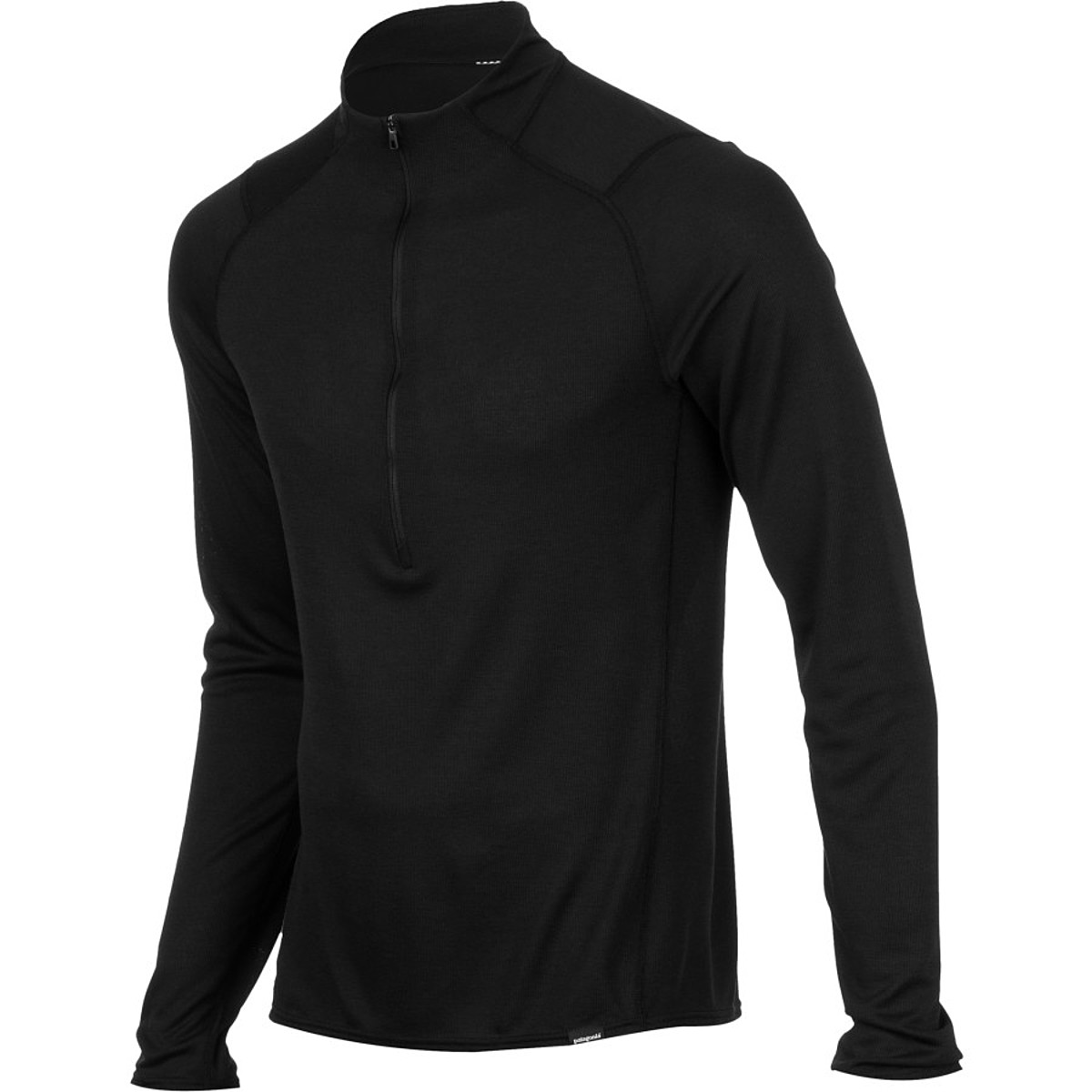
I prefer synthetic base layers since they tend to dry out faster that merino wool base layers. While merino is better with managing smell, I’ve found that modern treatments of synthetics do quite a good job with warding off stink. The old Capilene 2 fabric is an open-knit fabric that allows for a ton of airflow and impressive drying times. Unfortunately, Patagonia no longer uses it. I haven’t seen any other material with a similarly-open knit fabric, but I’m always on the lookout.
Base Layer Top 2: MEC T2 Zip Hoody
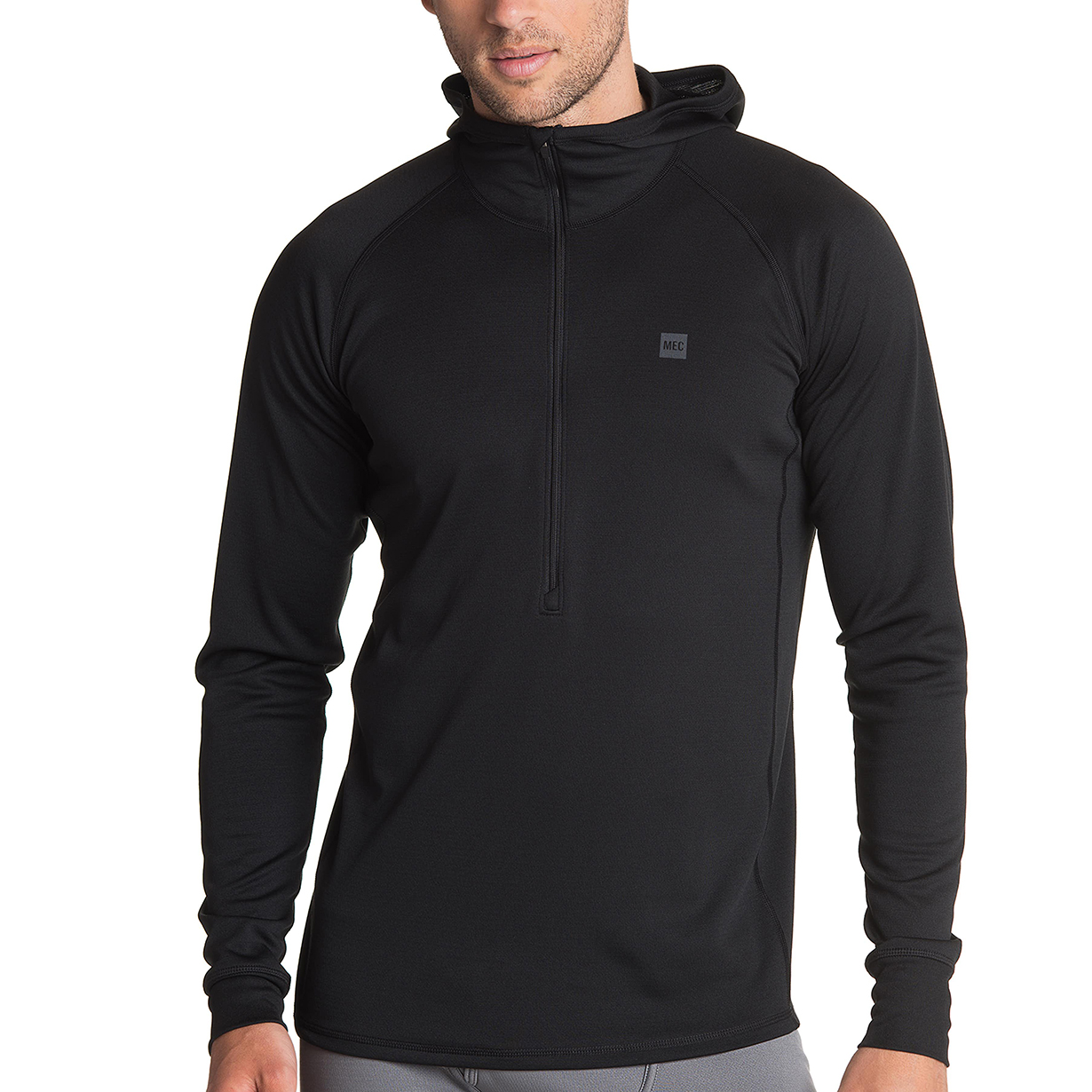
Rather than adding/removing mid-layers to regulate temperature, a membrane-less soft shell jacket allows me to stay dry and comfortable by simply picking the right base layer at the beginning of the day. So, if the day’s high temperature is below 30 degrees, I reach for the Mec T2 Zip Hoody. The grid fleece material is similar to Patagonia’s Capilene Thermal Weight, but not quite as warm. The thinner part of the grid fabric allows it to dry faster and breathe better than traditional fabrics. For me, grid fleeces aren’t the most comfortable next-to-skin, but the performance makes up for it.
Base Layer Top 3: Polartec Power Stretch Zip-Neck
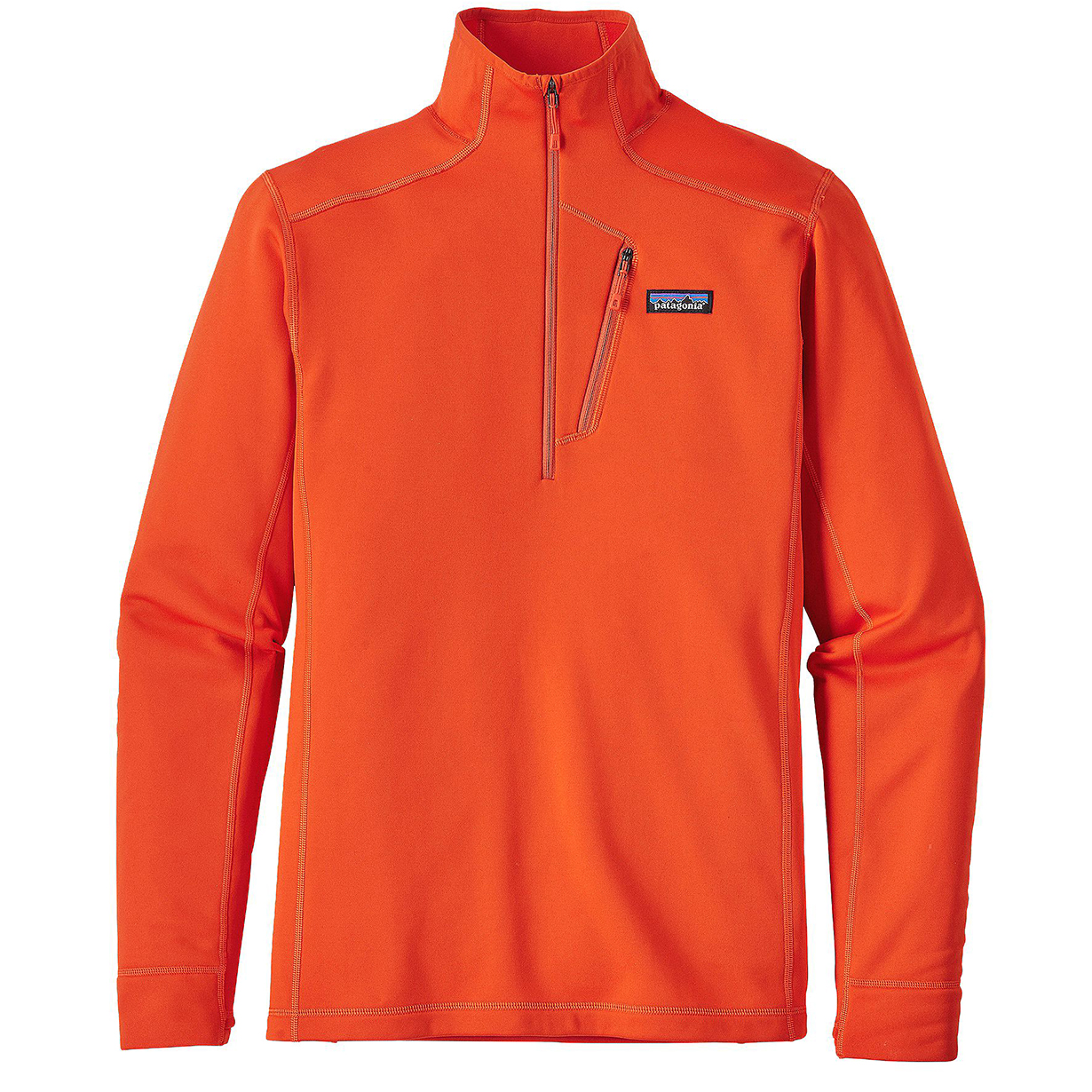
On the coldest of days, when the day’s high temperature is below 10 degrees, I reach for a Polartec Power Stretch zip-neck top. While my current Salomon top dates back to before 2004, Patagonia has a current model called the Crosstrek Fleece ¼ Zip (pictured above) that I can’t wait to try. What makes Power Stretch special? One, it has a smooth hard face that allows it to block very light breezes, which, in sub-zero temperatures below treeline, helps ward off chills without needing a full-on jacket. Two, the soft fuzzy backing is extremely comfortable and wicks moisture exceptionally well. When working hard, I feel significantly drier and more comfortable than I have when wearing any other material. While a lot of materials are touted for their wicking properties, Power Stretch really does feel like it’s a significant step above the others I’ve tried. However, I find it a bit too warm unless the temperatures are truly frigid.
Base Layer Bottom 1: Patagonia Capilene 2 Bottoms (Discontinued)
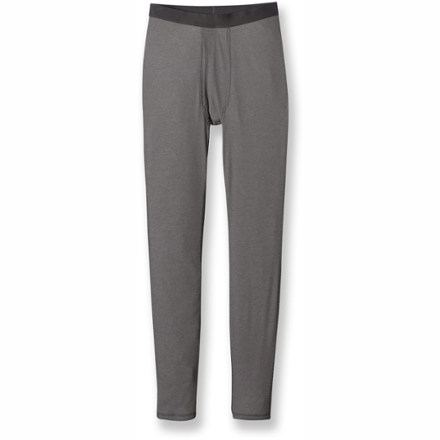
On warmer days, I usually just wear synthetic boxers, but on colder days, I reach for lightweight tights. The Capilene 2 open-knit fabric is less beneficial when worn under pants, so just about any lightweight base layer would probably work, but this piece has lasted a long time, and I haven’t yet had the need to replace it.
Base Layer Bottom 2: MEC T2 Long Johns
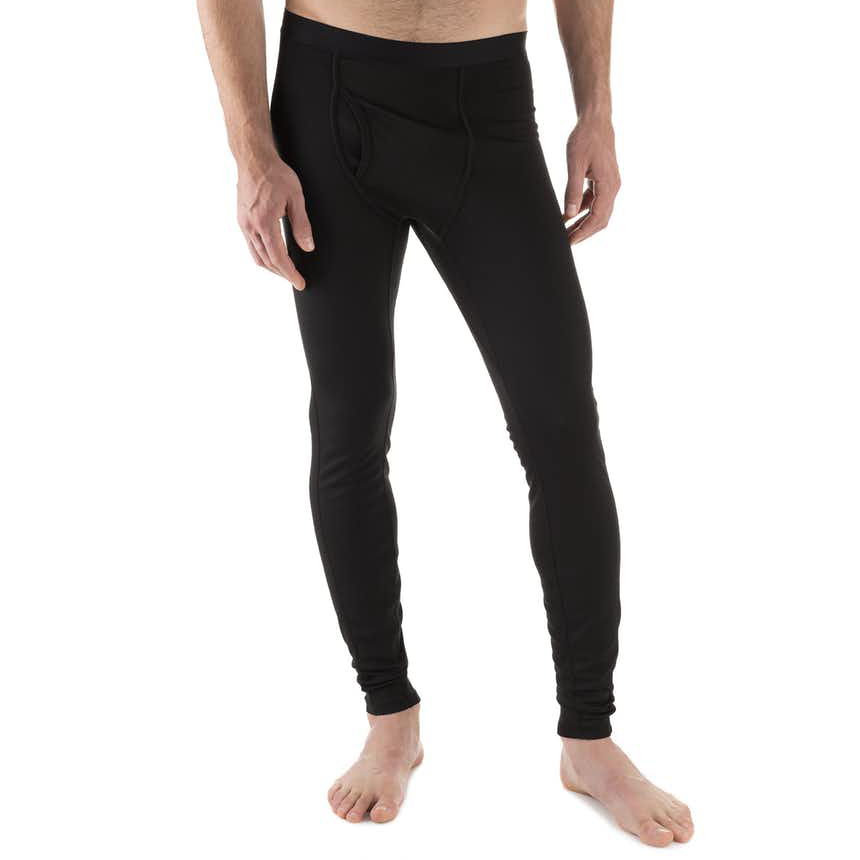
On the really frigid days, when I’m wearing Power Stretch on my upper body, I like a lightweight grid fleece. As mentioned earlier, the T2 grid fleece material allows it to breathe better than single-thickness materials, and is similar to Patagonia Thermal Weight (but not as warm).
Shell
• Jacket: Outdoor Research Ferrosi Hooded Jacket
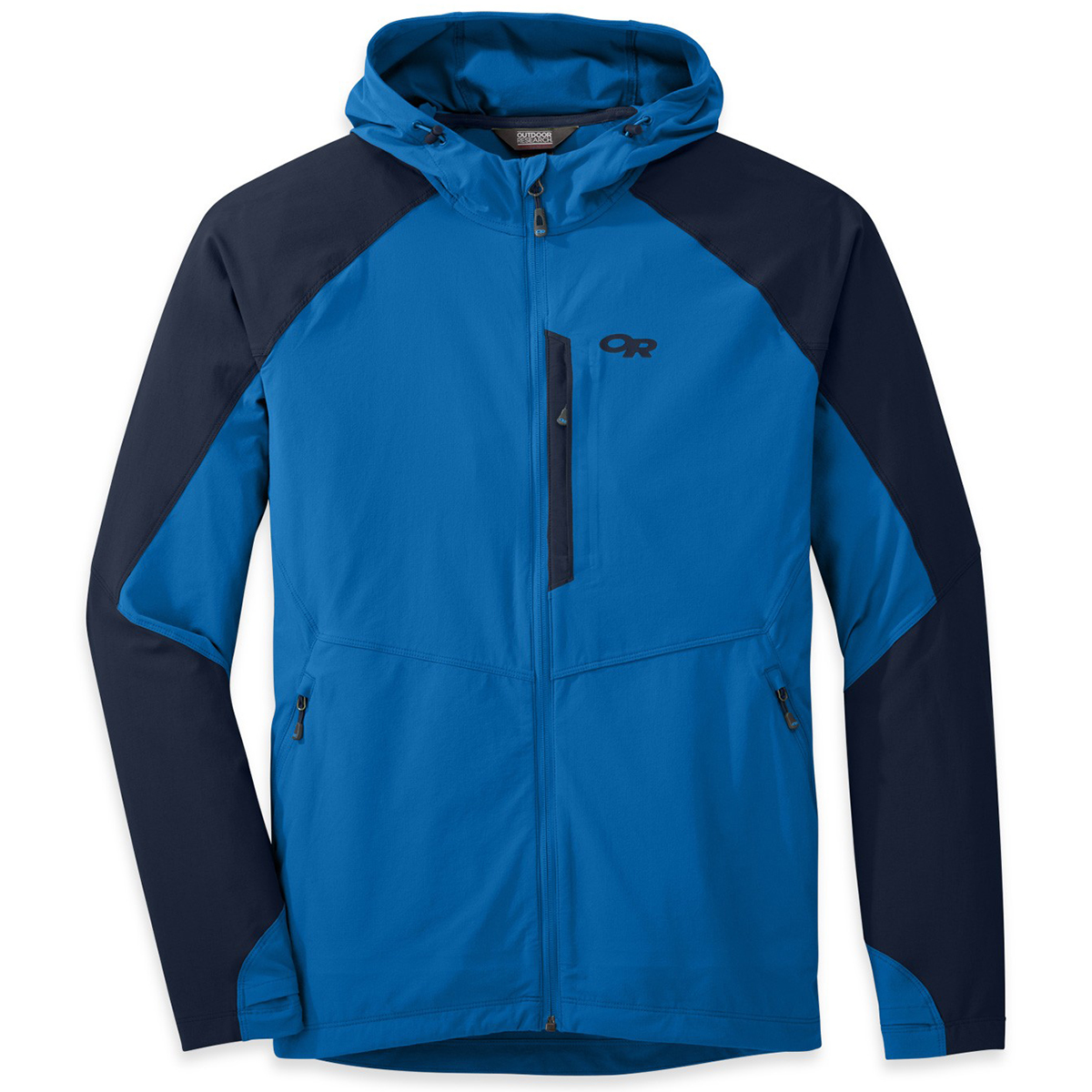
Like with pants, I never use a hard shell jacket while touring. I’ve found I’m far more comfortable and drier in a soft shell jacket that reduces gale force winds to a breeze than I am in a hard shell or membrane softshell jacket that blocks all of the wind. Like the Cirque pants below, the Ferrosi jacket lets a decent amount of wind through (much more than the Patagonia Knifeblade or the Patagonia Houdini). However, this is why I find it substantially more comfortable when working hard. I usually start a tour with the jacket on and take it off once I warm up. Then, when I climb above treeline, I put the jacket back on. The material is a bit thinner than the Cirque pants, which makes it work for both summer and mid-winter use — just pick a suitable base layer for the temperatures.
• Pants: Outdoor Research Cirque Pants
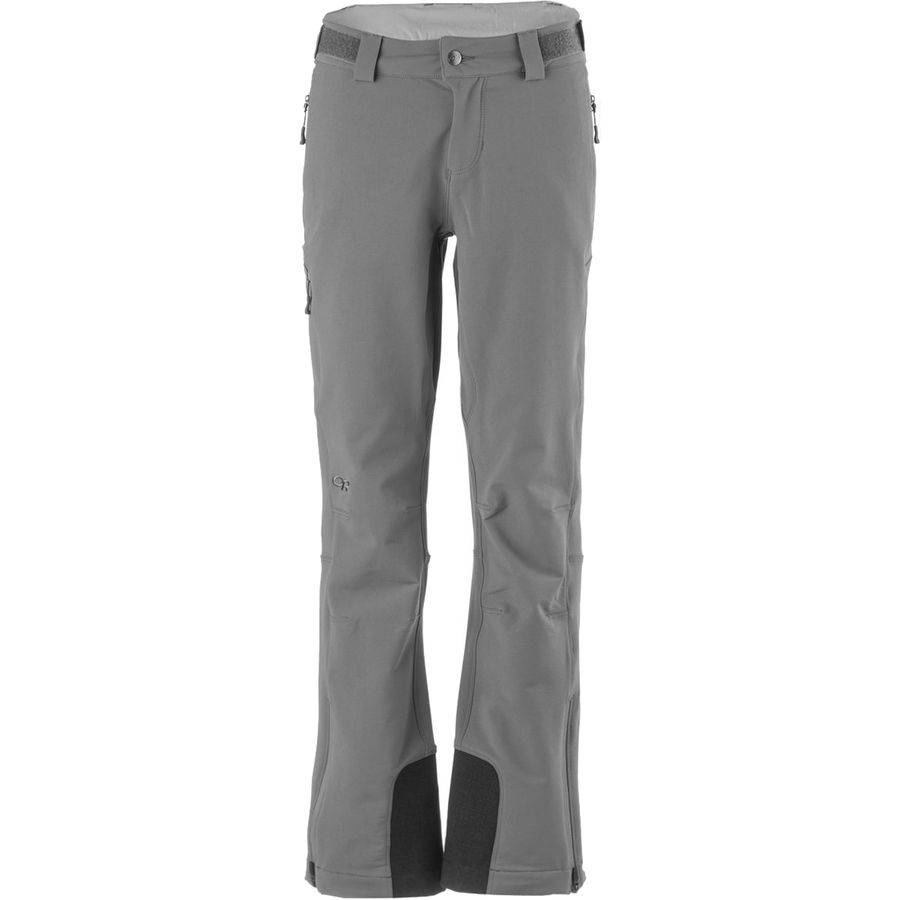
Unlike some of our other reviewers, I never use a hard shell pant while touring. The Cirque Pants use a membrane-less soft shell fabric and allow quite a bit of wind through. So, if it’s stormy, you won’t want to hang out and have lunch in an exposed location. However, there is a major improvement in comfort when working hard on the uphill, especially if the wind dies down (and side vents lose effectiveness). Despite less weather protection than a hard shell (or even a membrane softshell like the Patagonia Knifeblade), these softshell pants have worked well for me in continental climates — even in our ‘wet’ storms with high winds. Bonus points: the material has been extremely durable. Over the last 4 years, the only damage I can find is a small hole from crampons.
Lightweight ‘Belay’ Jacket: Mountain Hardwear Thermostatic Hooded Jacket (Discontinued)
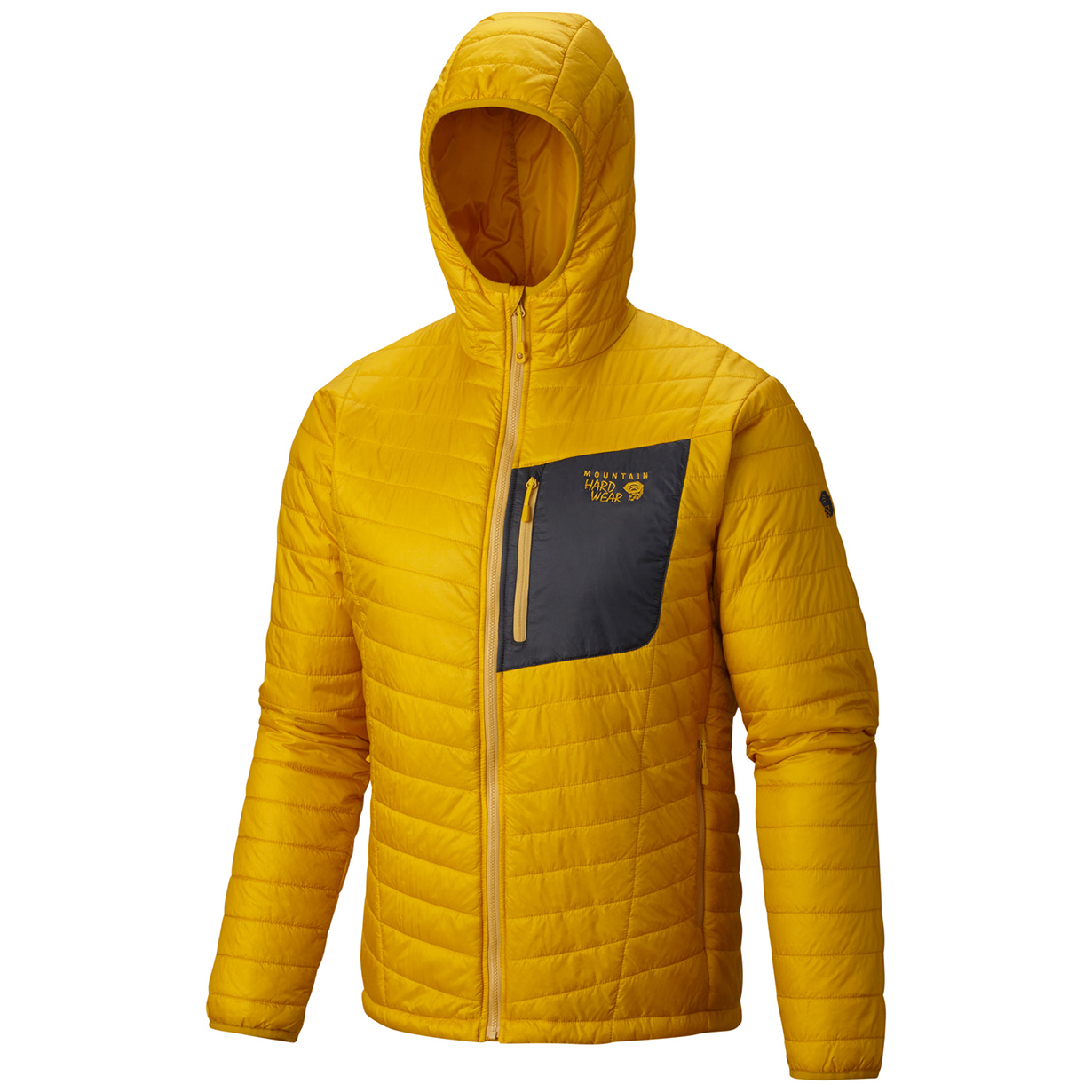
When it was in production, the Thermostatic Hooded Jacket was marketed as a mid layer. It has 60 g of Mountain Hardwear’s proprietary Thermal.Q Elite synthetic insulation and weighs 283 g / 10oz, which is pretty light for a synthetic jacket. All that said, I don’t use it as a midlayer at all. Instead, this puffy jacket goes on over my softshell jacket at rest stops, like climbers do at a belay. I also wear it over my softshell jacket when descending on the coldest of days, or even on the uphill, if I’m moving slow in stormy conditions above treeline. Rather than removing a hard shell jacket to add / remove warmth at the mid layer levl (and getting cold in the process), I find it much quicker, easier, and more comfortable to add / remove warmth by layering this piece over the top of a soft shell jacket.
Emergency Layer: Blizzard Bag
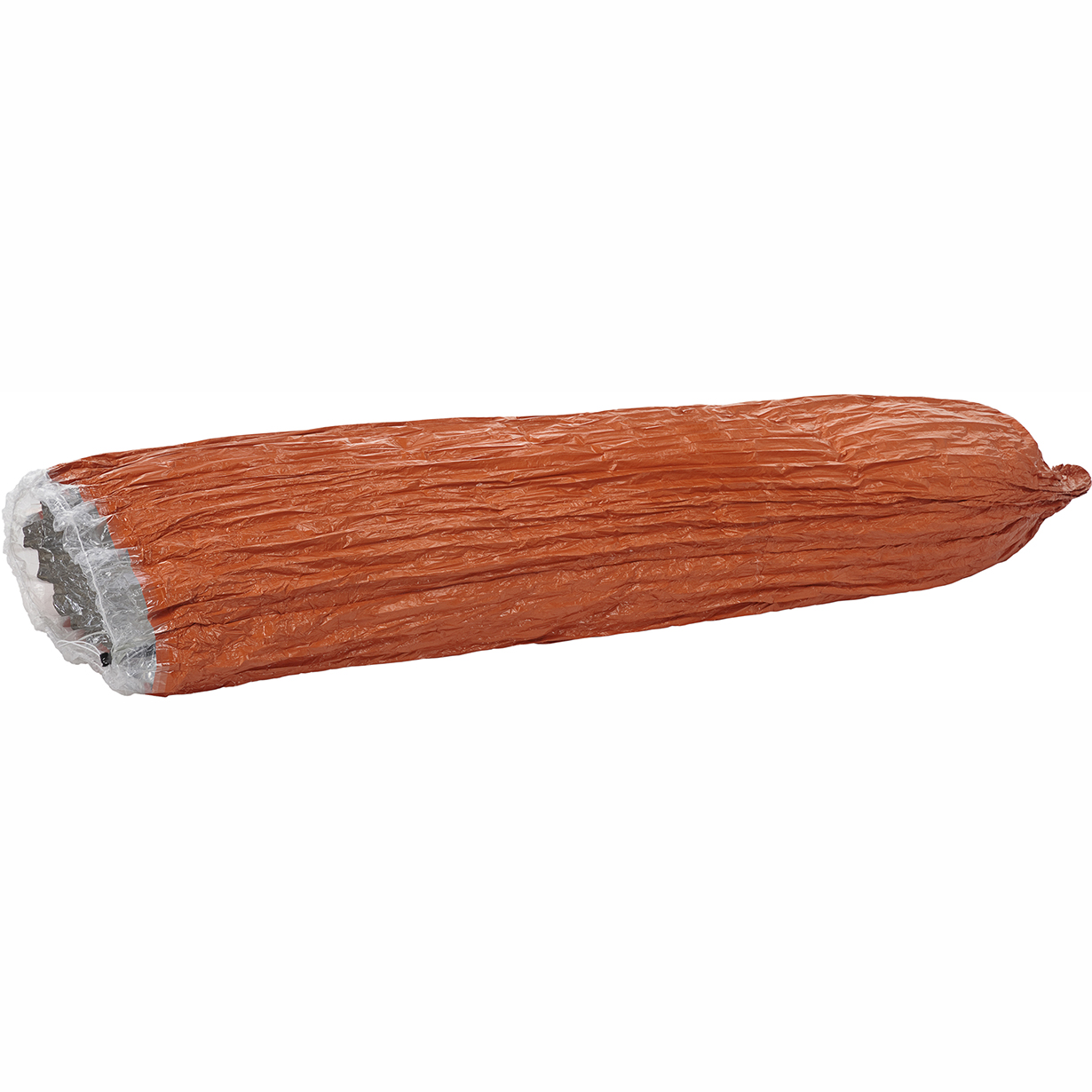
You may notice that my lightweight ‘belay’ jacket is pretty insufficient for emergency situations, especially on really cold days. The fact is, if I’m in a true emergency situation, I don’t consider a thick down jacket to be the best choice. I want the best weather protection and warmth I can get at a reasonable weight and packed size. In my opinion, there’s a better option: The Blizzard Bag. While very unconventional, it’s essentially a 40-degree sleeping bag and waterproof bivy combo, shrink-wrapped to about the size of a VHS tape (remember those?) and weighs less than 400 g / 14 ounces. Those stats are quite remarkable. In my opinion, in a true emergency situation, no down jacket even comes close to holding a candle to the Blizzard Bag. I often bring it on non-skiing day trips, in summer, as well.
Gloves: Truck M1 Gloves

These gloves are great. Unlike most gloves that are 100% windproof, the M1 is partially constructed with a softshell material that allows them to breathe much better. They work well both on the downhill as well as uphill on the colder days. However, on the uphill, I sometimes want protection with zero insulation, so I always have a pair of Black Diamond Pilot Gloves (discontinued) in my pack.
Socks: Smartwool Men’s PhD Downhill Racer
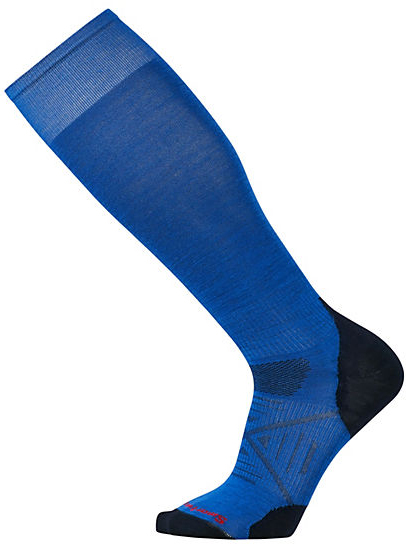
I don’t have a good reason for picking these, other than they’re very thin and they’re wool. Just about anything that fits that formula should work, if you size your boots for downhill performance. These are now discontinued, but it seems as though the PhD Ultralight Ski (pictured above) is the closest replacement.
Other: Outdoor Research Wind Pro Ear Band
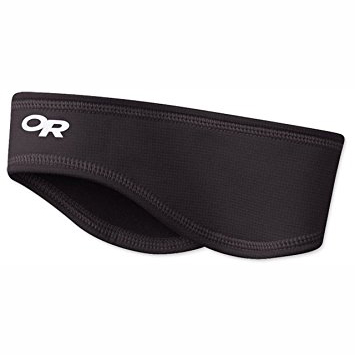
You’re above treeline on a cold day. The wind is blowing, and your ears are starting to hurt, so you put on your hood, hat, or helmet. Now your head is sweating profusely. There’s gotta be a better solution, right? The headband. No, it won’t win you any ‘cool dude’ awards, but it’s simple, effective, and the oh-so-perfect solution to keeping your ears warm and your head cool. Yeah, a Buff can work, but then you have to fuss with bunching or folding it up just right, and then it still doesn’t fit just right. I much prefer the simplicity and comfort of a headband with good ear coverage.
INBOUNDS SKIING — Colorado, Wyoming, and Utah
Base Layer Top 1: Mec T2 Zip Hoody

For half the days, this base layer is perfect. It breathes well, drys quickly, and has a hood for when the wind picks up on a hike. I haven’t found another base layer that uses a grid fabric that is this thin, and for that reason, it’s a winner in my book.
Base Layer Top 2: Patagonia R1 Hoody
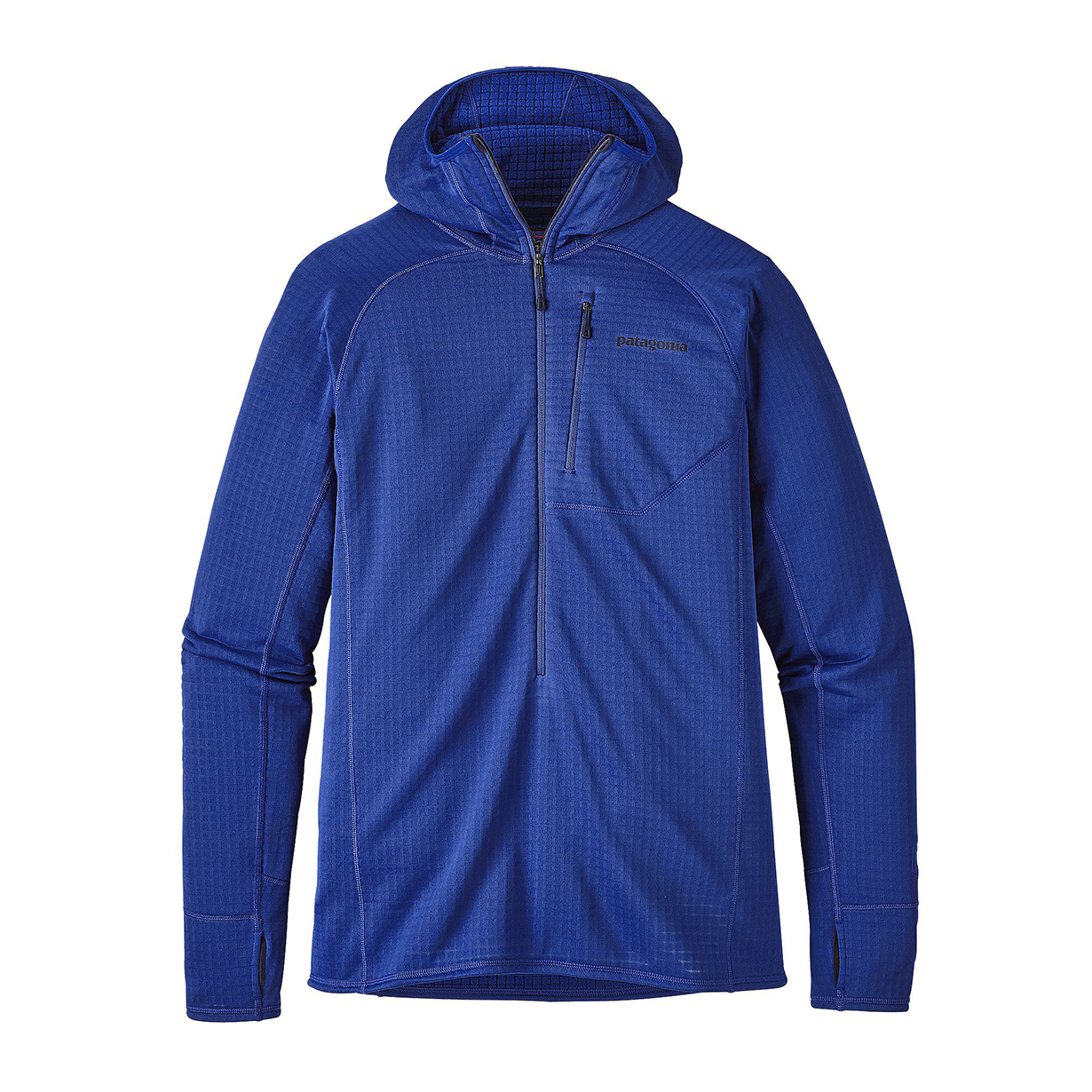
In addition to good breathability and quick-drying times, the R1’s hood fits under a helmet and functions like a balaclava without having to manage a separate piece of gear. It won’t freeze as easily as a Buff while also being cooler in warm temperatures, due to the deep zipper that can quickly leave your neck and chest directly exposed to the air. While the R1 Hoody has served me well over the past 5 years, I’ve always wished for something with a bit more wind resistance for when I remove my shell on a hike. For this season, I picked up the discontinued North Face Fuseform Dolomiti ¼ Zip Hoody, reviewed by Sam Shaheen. The smooth, hardface fabric on the Dolomiti adds the perfect amount of wind resistance. In addition, the interior fabric is much more comfortable next-to-skin than the Patagonia R1 material. Too bad it’s discontinued. I’m looking forward to seeing what Sam finds as a replacement.
Base Layer Bottom: Champion Activewear Pants
My choice, here, isn’t from an outdoor company. It’s from Target. Why? It’s simply better than anything else I’ve found on the market. First of all, I hate tights when skiing. They’re a necessary evil for the always-slim-fitting soft shell pants when touring, but in the resort I’m wearing shell pants that have a looser fit. The looser shell fit gives me room for a synthetic pant that can fit over my boots so I don’t have to roll them up or cut them down to calf-length, like I would with tights. Second, these pants have mesh strips on the side that line up perfectly with the zippered vents on my shell pants, which means I can dump even more heat when I get too warm on a hike. Third, they’re pants, not tights. Rather than sweat it out at the 70-degree apres bar in an outfit that was designed for 20-degree temperatures, I can leave my shell pants in the car and wear these, instead, without looking like I just left a yoga class. I don’t wear them on warm days, but on cool days, they’re just what the doctor ordered.
Shell Pants: Strafe Temerity Pants

These pants are awesome. The fit is loose without being baggy and the material has a nice feel to it. The air-permeable Neoshell membrane breathes great, while still blocking enough wind for on-the-lift comfort. And, when you start heating up on a hike, you have both inner AND outer vents to keep you cool. The thigh pockets are amply-sized, and the suspenders aren’t very bulky and don’t slip at all, which I can’t say about other pants I’ve owned in the past. Did I tell you I’m a huge fan of suspenders? I can raise the waistline up to provide ample coverage without being too warm from full bibs. Suspenders also allow me to oversize my pants — I love having an unrestricted waist when bashing through moguls and cut up snow.
Shell Jacket: Flylow Higgins Coat
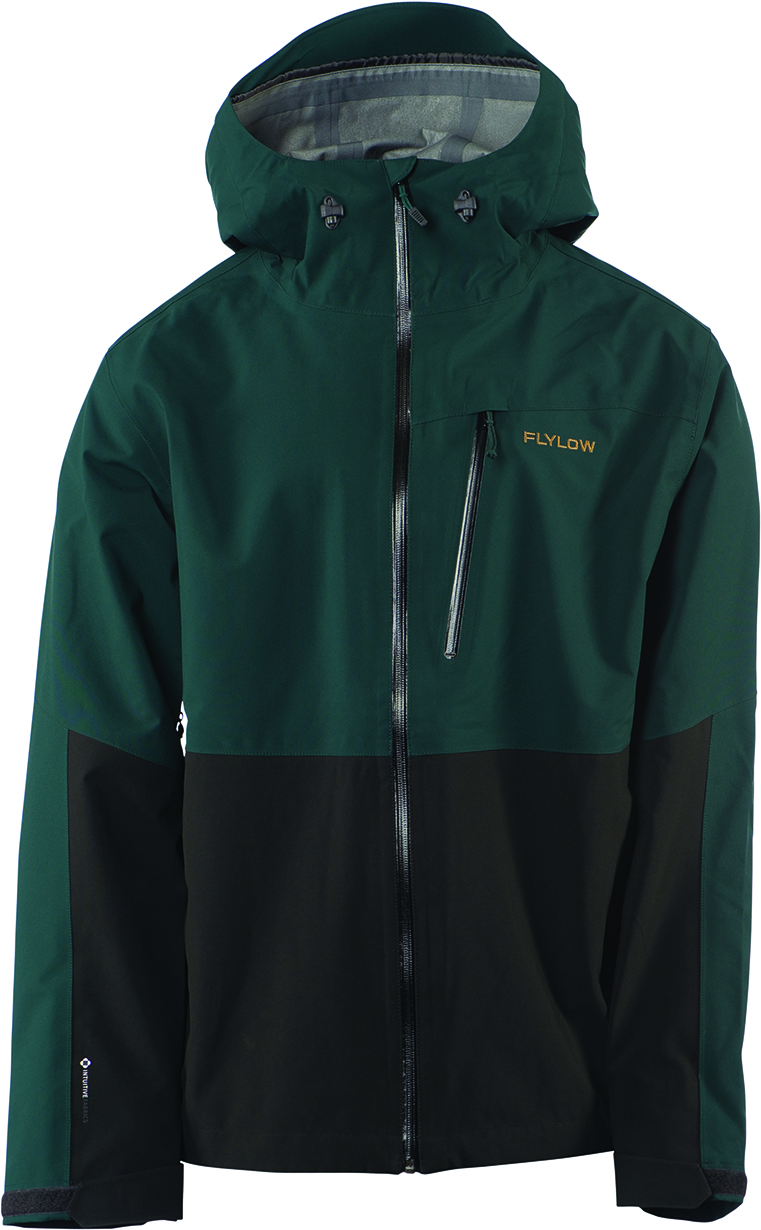
The Higgins jacket has a great loose, yet non-baggy fit, large internal drop pockets (for stashing gloves on a hike), and two chest pockets, one internal and one external, that are sized appropriately for a facemask and a phone. The material also has a soft touch, making it a lot quieter than other jackets I’ve owned in the past.
Insulated Shell Jacket: Flylow BA Puffy (Discontinued)

Rather than adding a mid-layer to boost warmth, I prefer an insulated hard shell on colder resort days. With an uninsulated shell jacket and a puffy mid-layer, when you get too warm and vent the shell jacket, the puffy mid-layer is still insulating you and keeping you warm, reducing your ability to dump heat. With an insulated shell jacket, the minute you vent, all insulation is bypassed and the cold air instantly hits your base layer, allowing for immediate cooling. In cold climates, where a good dose of insulation is necessary for resort skiing, this style of venting can be the critical difference between being comfortable and being too warm. While discontinued, Flylow still makes similar jackets (the Albert and Roswell are worth a look), and there are plenty of other options on the market — I look for large no-mesh underarm vents for maximum venting, as the size of the vents and lack of mesh can make a big difference.
Gloves: Truck M1 Gloves

For the warmer days, these gloves are great for all the reasons I mentioned in my touring kit selection. Best part is, they’re only $30. On colder days, I supplement with liners, but I’m looking forward to trying out the M1 Pro which will add a bit more windproofing and insulation for cold lift rides, while coming in at under $40.
Socks: Smartwool Men’s PhD Downhill Racer
See above.
Other: Seirus Original Masque (cut-down)
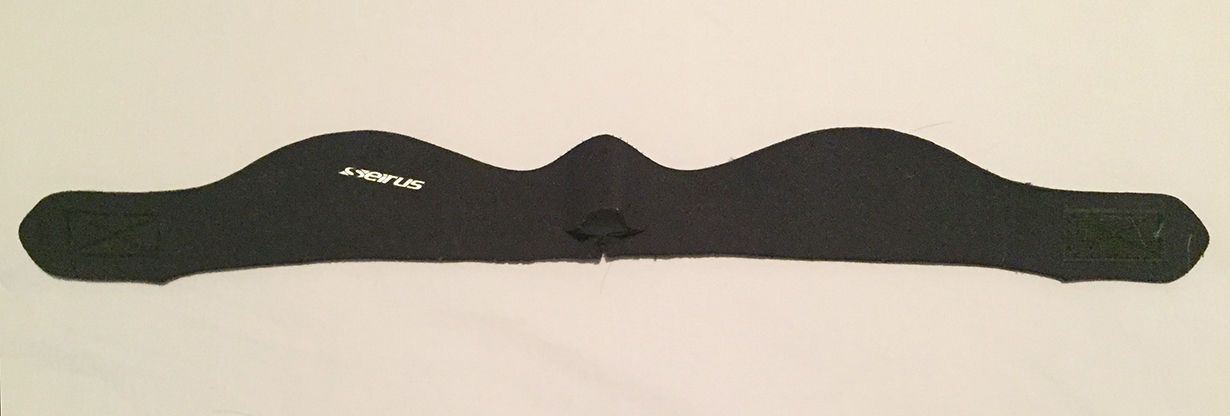
While the hood from the Patagonia R1 Hoody can act mostly like a balaclava, on the really cold days I still need nose and cheek protection. When looking for nose and cheek protection, I want something I can quickly add / remove while on the lift — therefore balaclavas aren’t making the cut. While many skiers use Buffs to cover their face, I really don’t like them. They make my neck hot and sweaty when not pulled over my face, and on the really cold days they haven’t provided adequate protection and, instead, turned into a stiff icey crumpled mess that only increased the odds of getting frostnip. Instead, I couple the hood from the Patagonia R1 Hoody with a cut-down neoprene mask, which gives me thick full face coverage without inhibiting my breathing (cut the bottom half of the mask off). It’s small enough that it fits easily into a chest pocket, and the velcro makes it really quick to attach and detach, even with gloves on.
NEXT: Dave Alie’s Outerwear and Apparel Selections

I enjoyed reading what you guys/Gals wear and why. I use similar pieces and you gave me some ideas on adding a couple, namely the Skins A400 3/4 compression tights. I have been using the CWX compression shorts the past few years along with neoprene knee braces, but I like the 3/4 length better.
I just bought the G-Form Pro-X compression shirt, I have a AC Separation on my left shoulder and a Labrum tear on my right shoulder from a Mountain Bike crash in September, so I have been looking for some form of protection that is not overly bulky and breathes decently.
Keep up the good work.
As someone who has been looking for replacements for his trusty, but kinda old and gross, Marker Spring Gloves – I share your pain JE – I’ve struggled finding good spring / touring gloves. For me not necessarily uphill – but something with the dexterity that works for errands around a cold and windy NYC, a fall tailgate, or for warmer days we seem to keep hitting on trips west to Utah. I’m intrigued not only by Luke’s description of the M1 Trucks – but also the free shipping and returns – not to mention the price! Fingers crossed. Happy Holidays!
For thinnish gloves,, I really like the OR Lodestar gloves. Unlike most gloves of similar thickness they don’t have any membrain.coating or insert.
This has two benefits:
First: breathability and drying time are best in class, so even if you get them wet from snow or sweat, they will dry fast.
Two, the fleece insulation is part of the outer fabric (back nylon and leather palm) so there are no separate layers sliding across each other, to reduce grip and dexterity.
Unlike many others they have a fairly weather resistant nylon back, water resistant Pittards leather palm and finger tips, and the leather is lined with a bonded fleece, where most palms are uninsulated.
Do all of you who ski-tour with an ultralight down jacket not worry that:
1: It will lose loft during the day due to moisture (at the very least from sweat in your clothing from the ascent, if not from snow)?
2: That you will rip those ultralight fabrics/seams if you wipe out, or ski through some trees/brush?